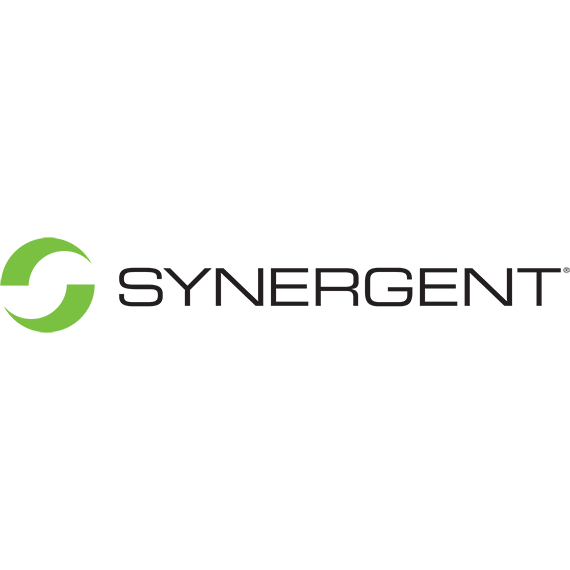The financial services landscape is undergoing a profound transformation, driven by technological advancements, changing consumer expectations, and unprecedented consolidation. Credit unions, traditionally known for their branch-based, community-oriented services, are increasingly embracing digital transformation to enhance member experiences, streamline operations, and remain competitive. Central to this digital transformation is the core system: the foundation of credit union operations. This article explores the role of the core system in facilitating digital transformation within credit unions, highlighting its importance in operational efficiency, member engagement, regulatory compliance, and strategic growth.
The changing credit union landscape
Credit unions are known for the personal, trusting relationships they build with their communities and members—a unique competitive edge. In the digital age, maintaining this member engagement is paramount. It used to be that if a credit union had a branch where its members lived and worked and made it a point to be involved in the communities they served, they could be assured of active member engagement. Today’s members, however, expect a seamless omnichannel experience, allowing them to interact with their credit union across various platforms, be it mobile apps, websites, debit and credit cards, call centers, ATM/ITM/kiosks, or in-branch services. As a result, credit unions are not only competing with other financial institutions in their physical communities, but also with traditional and non-traditional financial services providers that are present in their members’ digital communities.
Modern core systems facilitate this omnichannel approach—effectively engaging with members in both their physical and digital communities—by ensuring that member data is synchronized across all platforms. This synchronization enables members to start a transaction or interaction on one channel and complete it on another without disruption. Such a seamless experience is vital for maintaining member satisfaction, trust, and engagement. Done right, this omnichannel strategy can continue to position the credit union inside the member’s trusted inner circle of their daily life activities.
Rather than threatening credit unions’ relationships with their members and communities, therefore, successful digital transformation empowers credit unions to deliver even better services to their members by meeting them wherever they are. to accomplish this, credit unions must partner with a modern core provider that is able to support the ever-evolving capabilities of their core system—a partnership that provides the technology foundation and expertise to confidently serve their members today and in the future.
With the right core system, real-time data, and effective tools, credit unions can offer timely, personalized solutions, much like a trusted advisor. Automated communications can be delivered at the perfect moment, adding value to a member’s day in a supportive manner.
A modern core system also supports seamless access to services, blending automation and human interaction across physical and digital channels. This ensures that each member's unique needs are met, allowing relationships to evolve and grow. Through advanced data analytics, the right service mix, and attention to messaging, credit unions can maintain their advantage in the digital era. As AI continues to develop, these systems will only improve, helping credit unions thrive.
Simply put, the right modern core system can preserve, strengthen, and extend a credit union’s traditional relationships into the digital community.
The changing core system landscape
As the credit union landscape and the needs of their members evolve, core vendors are being pushed to rapidly modernize their core processing systems to support traditional banking functions while embracing the modern digital services that members increasingly expect from their financial institution. Many core vendors are at a crossroads, faced with a tremendous and urgent need to update their core platform(s) and being forced to make some tough decisions.
Large vendors offering multiple credit union core systems are choosing to limit investment and even to sunset certain systems so they can focus their modernization efforts on one or two platforms. Others, both new and legacy, are finding it difficult to raise the capital to execute development strategies needed to remain competitive. For some, the future is uncertain. A few vendors have both the technology and the resources and are effectively executing their technology modernization strategy. Even fewer vendors offer the holistic partnership that ensures a credit union can align and apply a modern core system to the credit union’s own digital transformation strategy.
Facilitating operational efficiency
A critical component of a modern core system in enabling a credit union’s digital transformation is its ability to drive operational efficiency. As a credit union expands the digital services it offers its members, the expense to implement and maintain these services is likely to grow as well. It is critical that a modern core system streamlines operations to allow credit unions to reduce costs, minimize errors, and improve service delivery.
Modernized core systems enable the automation of routine processes such as loan approvals, account openings, and transaction monitoring. This automation speeds up operations and reduces the risk of human error. Furthermore, integration capabilities with third-party applications—such as digital banking platforms, debit and credit card networks, statement and notice processing, check processing, electronic document archives, member relationship management (MRM) systems, and data analytics tools—can enhance operational workflows. By consolidating foundational functions into an integrated ecosystem, credit unions with the help of their core partner, can create a more efficient operational model that responds quickly to the rapidly changing fintech landscape and member needs.
Just as important to streamlining operations is the need to improve decision-making by providing real-time access to actionable data. This is critical for effective decision-making and operational efficiency. Modern core systems provide credit unions with comprehensive insights into member behavior, transaction patterns, and financial health. By better leveraging data analytics, credit unions can identify trends, forecast demand, and make informed strategic decisions. This capability allows credit unions to optimize their product offerings, tailor services, and adjust delivery channels to meet the nuanced needs of their members.
Regulatory compliance and risk management
Modern core systems come equipped with features that automate compliance reporting, reducing the manual effort involved in maintaining regulatory standards. These systems can track transactions, monitor member activities, and generate reports necessary for compliance audits. By automating these processes, credit unions can ensure they meet regulatory requirements while allocating resources to strategic initiatives rather than compliance-related tasks.
Effective risk management is also crucial to maintaining the financial health of a credit union. Modern core systems can integrate risk assessment tools that monitor lending practices, member credit worthiness, and market trends. By providing real-time insights into potential risks, modern core systems help credit unions make informed lending decisions and mitigate financial exposure.
With digital transformation comes increased potential for cybercrime and data breaches. Every new service channel creates another pathway to the core systems and member data. A modern core system will not only provide traditional, after-the-fact security monitoring options, but it also should enable real-time fraud prevention with core functionality or real-time integration to fraud prevention solutions. Credit unions must execute their digital transformation strategy on a modern core system that does not compromise on member data protection or access.
Enabling strategic growth
With a modern core partnership, a credit union is well-positioned to execute their digital transformation strategy. Done right, this will help drive strategic growth. With this will come more members, the need for more products and services, and likely more staff. It will generate ideas and foster the need for solutions that may not yet have been thought of. As a credit union drives growth into the blended physical and digital member community, the modern core system will play a significant role in enabling this strategic growth through scalability, flexibility, and innovation.
As credit unions grow, their operational needs evolve. Modern core systems are designed to be scalable, allowing credit unions to expand their services without the need for extensive system overhauls. Credit unions will still expand and evolve by adding new branches, but with digital transformation comes the opportunity and need for continuous innovation. A modern core system should be counted on to support third-party fintech solutions, products, service channels, and markets that may still be just ideas, some of which will undoubtedly be needed to continue to grow while meeting and hopefully exceeding the members’ continuously evolving set of expectations. It should be able to do all this while adjusting workflows, data fields, automation, monitoring, and reporting to enable maximum efficiency of credit union operations.
Core conversions
While modernizing core systems offer numerous benefits, credit unions may need to navigate several challenges in their digital transformation journey. Depending on the credit union’s current core partner, a core conversion might be at the top of the list.
No credit union wants to do a core conversion if it can be avoided, but a credit union must evaluate its current core system and partnership before embarking on true digital transformation. A credit union’s core partnership is the foundation, or at the very least, the cornerstone of that foundation on which digital transformation will be built. If the core system and the core vendor cannot be counted on now and into the foreseeable future, then it might just be that the first step in a credit union’s digital transformation is a core conversion. If it is determined a core conversion is not necessary, it still may be a good idea to shore up that foundation by enlisting the credit union’s current core vendor or an experienced core consultant to do an efficiency or deep dive type consult to review all areas of the core system and recommend changes in preparation for digital transformation.
The culture of change
Credit unions that commit to digital transformation are committing to a cultural shift across their organization and their membership. Every year will bring new solutions, new products, new challenges, new opportunities, and new member demands. Embracing this new normal will open the door for credit unions to be that one constant partner to their members in a world that never stops changing. Those credit unions with the right core partnership that can successfully transition to a culture that thrives on perpetual change will be able to continually meet their members wherever they are—today and well into the future.
In conclusion, the core system partnership is a foundational element in the digital transformation of credit unions. It influences—more than any other single thing—operational efficiency, member engagement and service, regulatory compliance, and strategic growth. By embracing a modern core system supported by a skilled and dedicated partner, credit unions can streamline their operations, enhance member experience, and position themselves for future success in an increasingly competitive and rapidly evolving industry. While challenges exist in the transition process, laying the foundation now with a modern core system partnership and committing the right digital transformation strategy are increasingly important to the success of the modern credit union. With a modern core system partnership, an integrated blend of traditional and digital services, and a culture that embraces change, the future of credit unions has never been brighter.








